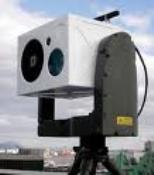Jun 22 2010
Obzerv Technologies has launched a modular type of Active Range-Gated camera. Manufacturers of the airborne version of multi-spectral imaging turrets worldwide are constantly focusing on improving on the availability of the number of sensors as well as their performance.
The commercial launch of this camera will speed up the implementation of active range-gated imaging functionality in current multi-spectral imaging turrets.
 Obzerv surveillance cameras
Obzerv surveillance cameras
The identification performances of the land-based cameras of Obzerv are unmatched and have triggered their installation for mission critical applications worldwide.
There are many advantages of integrating the sensor in multi-spectral imaging turrets, which find numerous applications in intelligence, monitoring of to regulation-based environmental compliance monitoring, surveillance, reconnaissance, law enforcement, and fishery control avenues. Such applications can be performed from safe stand-off ranges.
It can be used for search and rescue operations particularly during sea-based airborne missions where the technology will be able to increase the success rate significantly as the reflective stripes on floatation devices or life vests look like light beacons when viewed with the active range gated camera. In addition, the technology can depict the variation in reflectivity between the environment and camouflage nets, delivering a tactical benefit during air-borne missions.
This gated camera is the initial member of the product portfolio that aims to facilitate incorporation of active range gated imaging feature within multi-spectral imaging turrets. Active Range-Gated camera have been incorporated within the MX-20 multi-sensor enabled multi-spectral imaging system of L-3 WESCAM.
Obzerv Technologies’ Co-Founder and CTO, Louis Demers, informed that Obezerv is proud of the miniaturization and integration challenges negotiated by developing this modular camera. He explained that the aim was to provide the tiniest payload possible to facilitate active range gated imaging functionality in current multi-spectral imaging turrets. He added that including this functionality did not involve sacrificing other capabilities, resulting in overall operational benefit to current products.